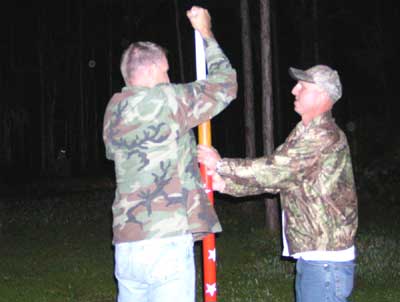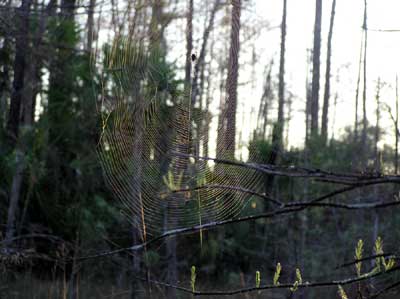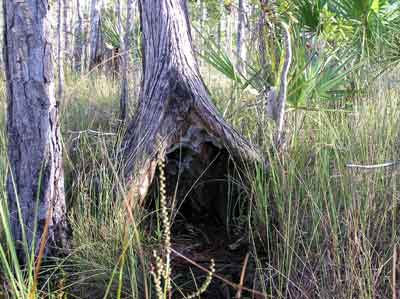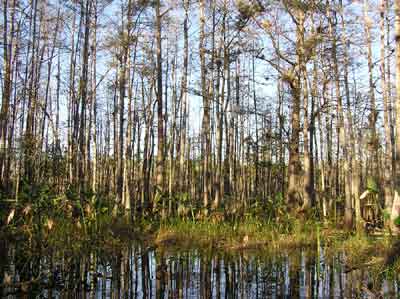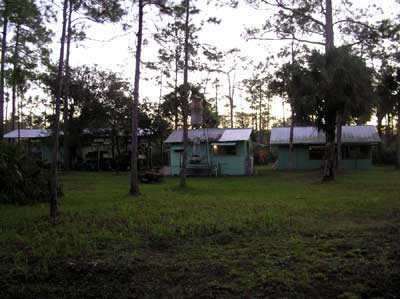
An early morning view from the west side of Camp SixPack on opening morning of the hunting season in the Big Cypress Swamp. This November morning, unseasonable warm weather is greeted by sleepy hunters not quite awake, but eager to get on their morning stands.
Someone with sharp eyes will see a hunter in the picture taking an early morning nature call. The sun not quite breaking day, the dedicated hunters are already in the swamp looking for their quarry. This sleepy hunter is trying to catch up and not miss his opportunity to be successful in getting some game.
This new view of Camp SixPack, only recently being available, because the fire break around camp had been improved during the summer.
The hunting gods must be worshiped to have any chance for success. Here is Rich doing the ritual the night before the hunting season begins.
Its a ceremony that can not be revealed to those that are not believers. The intricate steps involved must be followed to the letter or a successful harvest will not be had. The more that participate, the better is the result. The only part of the ceremony that I can reveal is that alcohol is involved.
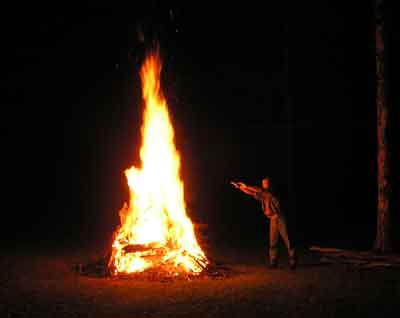

A group of ATV riders were mistreating the camp property. Riding their ATVs over the camp lawn, jumping the ATVs on the property, throwing trash around and in general not respecting the property of others. Needless to say, alcohol was involved.
One of the nearby private property owners went over and asked the ATV riders to leave and they complied. While it is expected that all people have equal access to the Preserve, there are some small parcels of property that are not part of the Preserve. These private land holdings are there at great effort. Please respect those properties and treat them as you would expect your own property to be treated.
On watch, this water moccasin was comfortably sunning him (her) self, midmorning in the outer ring of a cypress head. Perfectly happy just to lay there coiled up, able to strike, but not wanting to and just enjoying the morning.
It didn't seem to mind me passing by and stopping to take a few pictures. It did not even bother to show me the "cotton mouth" that provides it with its other name. This one was not a big one as they can be, but even in this size they still have the venom the big ones have.
So! its always a good idea to watch your step as you explore the swamp.

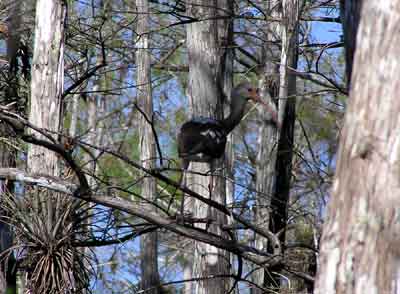
Here is a juvenile Ibis, one of many in a flock up in the cypress trees. This picture was taken just a few steps from where the water moccasin was coiled up and just a few seconds later.
It has been my experience that there are some periods of time during the day that animals are just more visible and available to be seen. A lot of hunters believe in the periods of the moon, peak periods of feeding times during the day, where animals are more active and the biorhythms of the swamp. Some hunters so strongly believe in this, that they don't bother to hunt until those times of the day.
Unfortunately, its not the same time each day, so a person like me, that is not in tune with those biorhythms, just has to stumble into them, rather then know when they will be. Makes it tough!

